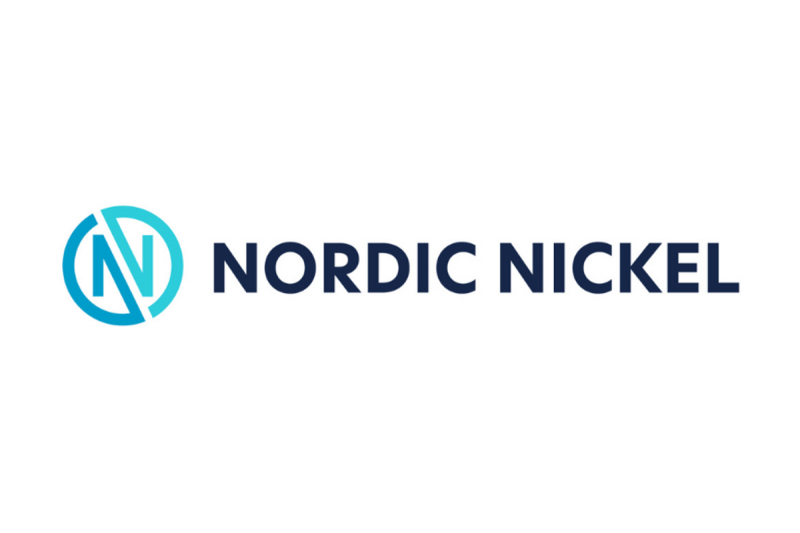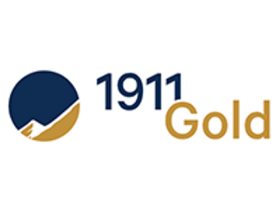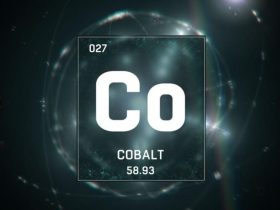Nordic Nickel Limited (ASX: NNL; Nordic, or the Company) is pleased to announce extremely positive results from its first pass metallurgical testing program for its Hotinvaara nickel-cobalt deposit in northern Finland. The current in in-situ JORC (2012) Mineral Resource Estimate at Hotinvaara is for 418Mt @ 0.21% Ni and 0.01% Co (0.22% NiEq1) for 862,800t contained Ni and 40,000t contained Co2.
HIGHLIGHTS
Master composite from 11 samples across the Hotinvaara deposit produced a clean concentrate of 18.4% Ni and 0.66% Co after Locked Cycle Testing.
Ni recovery of 62% achieved in a first pass program, employing a straightforward, conventional grinding and flotation process (cobalt recovery 51%).On average for the master composite, 75% of the total nickel assay is in sulphide form, and nickel deportment in the sulphides is almost entirely in pentlandite.Excellent results achieved with a relatively coarse grind of 90 microns, with no re- grind required.Comminution test work indicates the ore would be amenable to SAG milling and is not abrasive, both positive for project economics.Result is a superior, high-grade nickel concentrate with payable cobalt.Hotinvaara’s metallurgical properties compare favourably with similar lower grade nickel sulphide deposits currently under development in Canada.Achieving such a premium quality concentrate can be achieved from the abundant lower grade disseminated nickel sulphides at Hotinvaara bodes well for the rest of the Pulju Belt project area.
The Hotinvaara licence itself, within which the deposit sits, covers 5km2 to the southwest of the 240km2 Pulju Project area. The drilled footprint at Hotinvaara represents just 2km of the known 35km of mineralised strike that the prospective ultramafic unit lies within, highlighting the strong potential for resource growth.
The Pulju Project is a rare, district scale nickel-copper-cobalt exploration and development opportunity within a progressive mining district in Europe. To date, Pulju has been shown to host predominantly shallow, disseminated lower-grade nickel sulphides, such as those forming the majority of the current Hotinvaara deposit, but also some minor, but extremely high-grade massive/remobilised sulphides. Regarding the latter, these thin zones of concentrated, remobilised iron-nickel sulphides so far intersected at Hotinvaara have attained grades of up to 9.6% Ni3, demonstrating that Pulju has the potential for a style of extremely high-grade nickel sulphide mineralisation that has yet to be targeted.
The metallurgical test results reported here demonstrate that the lower grade disseminated nickel sulphide mineralisation at Hotinvaara is amenable to conventional processing and can produce a premium concentrate. Therefore, the next stage of exploration at Pulju may confidently focus on both known styles of mineralisation to achieve potentially valuable outcomes:
1) Increasing the existing resource base by targeting more of the shallow disseminated nickel zones, particularly in the known higher-grade areas. Although the overall grade of the current Hotinvaara resource is 0.22% NiEq, substantial higher-grade zones exist within these wide areas of dissemination, generally associated with greater levels of recrystallisation/remobilisation and higher Ni-in-sulphide content, including:
97m @ 0.33% Ni and 0.01% Co in HOV0073;13m @ 0.47% Ni and 0.01% Co in HOV0103;13m @ 0.33% Ni and 0.03% Co in HOV0263; and26m @ 0.59% Ni and 0.02% Co in HOT0164.
Preferentially targeting these zones within the shallow disseminated nickel mineralisation becomes a valuable and viable path for future exploration.
2) Identifying and testing the structures that may have trapped and further concentrated these extensive remobilised sulphides found at Pulju. As a reminder, drilling at Hotinvaara has confirmed that conditions exist for the formation of extremely high grade remobilised and massive sulphides, albeit only in thin zones thus far, for example:
0.26m @ 9.61% Ni, 0.36% Co and 0.17% Cu in HOV0323;0.90m @ 4.98% Ni, 0.14% Co and 0.03% Cu in HOV0323;0.32m @ 5.03% Ni, 0.24% Co and 0.06% Cu in HOV0393; and0.60m @ 4.66% Ni, 0.10% Co and 0.02% Cu in HOT0065.
An important next step in pursuit of this depositional model is a detailed structural analysis of the entire Pulju Belt to highlight structural features that may host depositional trap sites for accumulating and concentrating these remobilised sulphides. This analysis will integrate current and historical datasets such as airborne geophysics, surface mapping and the newly acquired BOT sampling database to prioritise later drill testing.
Hotinvaara Metallurgical Test Program – Report Summary
The testwork was conducted by Blue Coast Research in Parksville, British Columbia, Canada and was initiated to develop a baseline metallurgical treatment scheme aimed at making a saleable grade nickel concentrate. Comminution and flotation data sufficient to provide cost input into a potential future economic study of the project were to be created, together with preliminary estimates of recoveries and concentrate quality.
Sixteen samples in total were selected to represent a variety of expected metallurgical response types. Most are siliceous samples from the predominant ultramafic unit spanning a range of nickel head grades and sulphide nickel contents, selected to provide a geospatially and geostatistically valid representation of the main ore body, albeit with a logical bias in favour of shallower samples.
Click here for the full ASX Release










